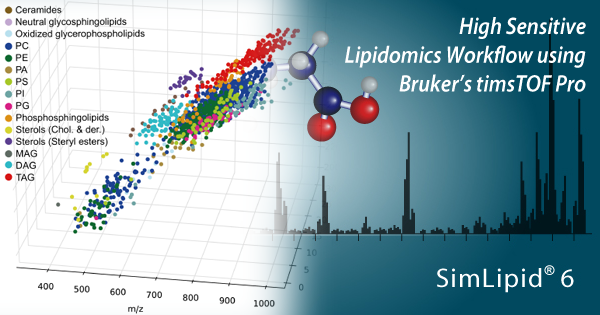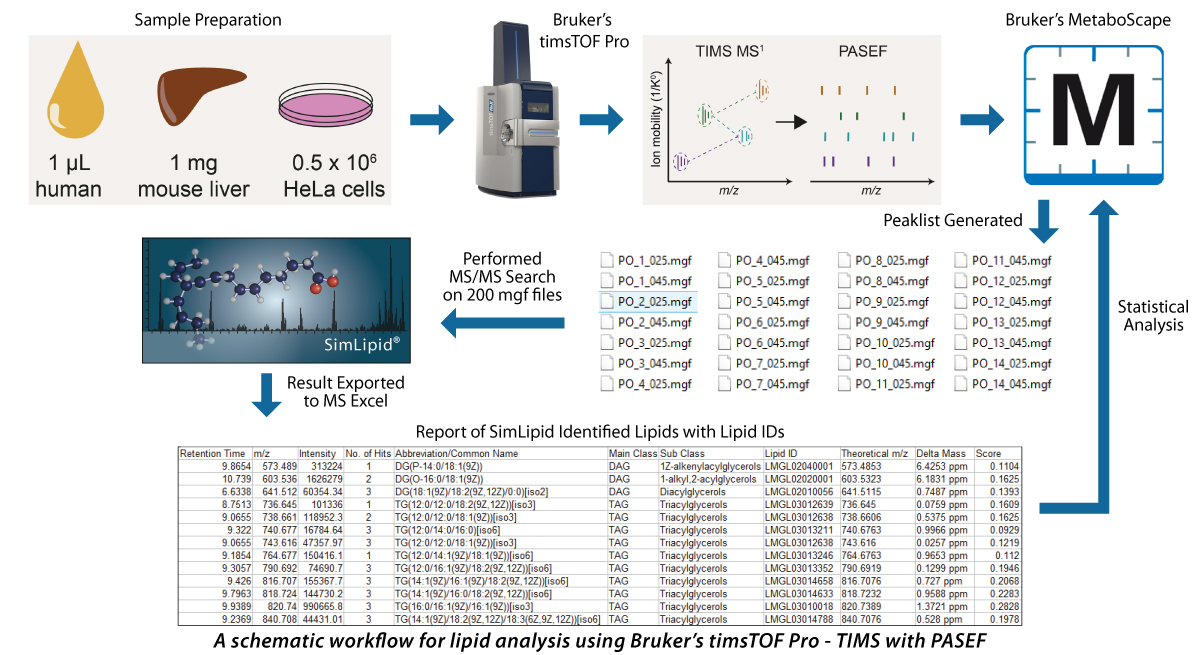Lipidomics Workflow using Nanoflow Separation Coupled with TIMS and PASEF

October 16, 2019
Liquid chromatography (LC) coupled with mass spectrometry (MS) is an established method for lipidomics workflow. Sensitivity and high starting amounts are the major limitations of this method. To overcome these limitations, a novel approach utilizing nanoflow separation and trapped ion mobility spectrometry (TIMS) was implemented to increase sensitivity. Also, TIMS was synchronized with precursor selection based on parallel accumulation serial fragmentation (PASEF) showed a ten-fold increase in MS/MS acquisition rates without any loss of sensitivity. Thus, a rapid and highly sensitive lipidomics workflow was generated using TIMS and PASEF. To evaluate this workflow, low sample amounts from various biological sources (1 uL human blood, 1mg mouse liver tissue and 0.5 X106 HeLa cells) were analyzed. Four-dimensional (m/z, retention time, ion mobility and intensity) results were acquired and assigned to PASEF MS/MS spectra. Using SimLipid, a software tool for MS data analysis, these PASEF spectra data were analyzed for lipid identification. Sequential data analysis steps of lipid annotation, MS/MS score filtering, isomer grouping were implemented. The identified lipids were accurately mass measured based on the head group and fatty acyl level. A total of 437 unique label-free lipids were quantified across replicate plasma samples. The TIMS collision cross-section (CCS) values of these lipids were measured both precisely and accurately. Then the coefficient of variation (CV) for these lipids from across replicates and biological samples was compared. Also, the relative deviation of TIMS CCS values from both literature reports and predicted machine learning values were compared. A total of 1329 lipid ions four-dimensionally spaced with a precision of <2ppm for mass, <0.2% for CCS and about 1-5% retention times directly from unfractionated biological samples were compiled into a library. For more details, please visit http://premierbiosoft.com/citations/lipidomics-posters-technical-application-notes.html.

| Comment | Share |
|


